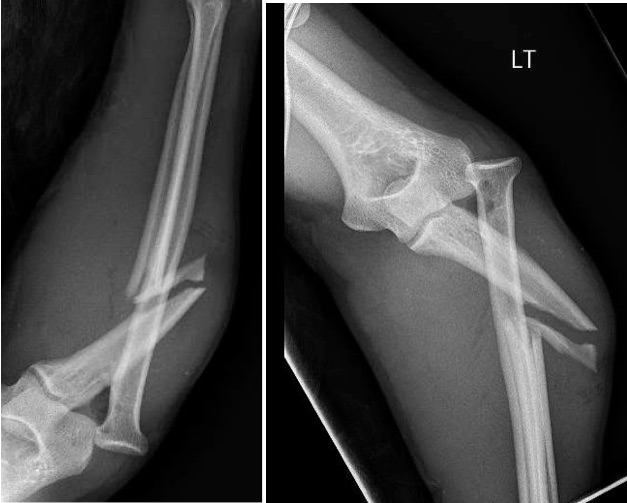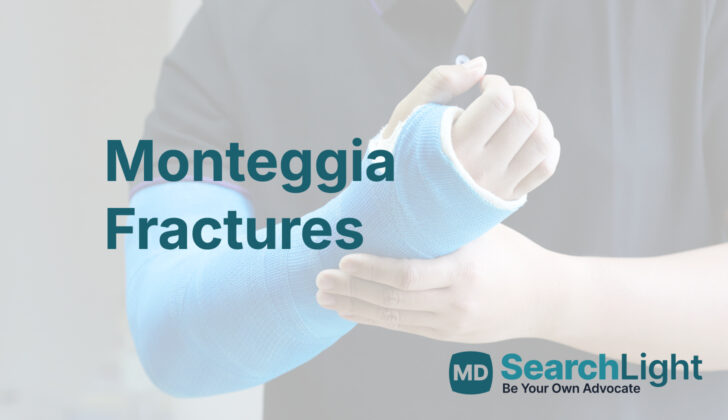What is Monteggia Fractures?
The forearm is an essential part of the human body, important for everyday activities. It helps increase our hand flexibility by letting it twist and rotate. Breaking your forearm can significantly affect your abilities in the short and long term, especially if not treated correctly. A special kind of forearm fracture is the Monteggia fracture, first identified by Giovanni Battista Monteggia in 1814. This fracture involves a break in the upper part of the ulna (one of the bones in the forearm) along with a dislocation of the radial head (the top of the other forearm bone).
Thanks to improvements in x-ray technology and research on fractures, we now have a better understanding of the Monteggia fracture, how to categorize it and how to treat it surgically. However, it can still be difficult to diagnose such fractures based on physical examination alone, and complications can occur if they are not treated properly and promptly.
What Causes Monteggia Fractures?
Monteggia fractures usually happen when the forearm receives a direct hit while the elbow is straight and the forearm is turned inwards too much. The impact’s energy from the break in the ulna, a bone in the forearm, moves to the membrane between the bones and results in a tear in the upper ligaments, causing a disruption in the joint connecting the radius and the capitelum (this is called the radiocapitellar joint).
Forearm fractures in the middle bone are often seen in two very specific age groups: young men and elderly women. In young males, these fractures are often caused by high-energy accidents, such as falling from a great height, sports injuries, or car crashes. In contrast, forearm fractures in elderly women usually occur due to low-energy accidents like tripping and falling from a standing position.
Risk Factors and Frequency for Monteggia Fractures
Monteggia fractures, which make up about 1% to 2% of all forearm fractures, are relatively rare. Instead, most people fracture their forearm closer to their hand, rather than at the midpoint of their forearm. The latter kind of fracture – the midshaft forearm fracture – happens to about 1 to 10 in every 10,000 people each year.
Several risk factors can make someone more likely to suffer a midshaft forearm fracture. These include:
- Playing sports, especially contact sports like football and wrestling
- Having osteoporosis, a condition that weakens bones
- Being in the post-menopausal phase, where a decrease in estrogen can lead to bone loss
These risk factors explain why middle forearm fractures most often occur in two groups: young males (with 10 in every 10,000 getting the fracture) and older females (where the rate is 5 in every 10,000).
Signs and Symptoms of Monteggia Fractures
When a person has a fracture in their forearm, they usually experience pain at the site of the injury. The first step to diagnosing this is by visually inspecting the area, paying special attention to the skin and soft tissue. This helps to identify any visible abnormalities, such as bone deformities, muscle bruises, skin cuts, tendon damage, and issues with the nerves or blood vessels. Importantly, any open wounds over the fracture site mean immediate surgery is needed.
Next, the area should be gently touched to find any deformities and areas of tender pain. The joints close to the fracture should also be examined to see if there are any other injuries. It’s important not to touch open wounds directly. In cases where the injury was caused by a strong crushing force, it’s necessary to carry out a thorough examination of the nerves and blood vessels, and to keep checking them over time for signs of acute compartment syndrome. This is a severe condition that can cause numbness, weakness, tingling sensations, and radiating pain.
The chances of nerve damage are quite small but testing the radial and median nerve distribution is essential to spot any damage. Damage to the ulnar nerve, in particular, is quite rare.

Testing for Monteggia Fractures
If you think you’ve broken or dislocated your forearm, an X-ray will usually be needed. This will typically involve taking pictures from two angles – front to back and side to side. Occasionally, your doctor may also want to take an angled view to better understand the injury. If there’s any chance of additional injuries to the wrist or elbow, you’ll likely need X-rays of those areas as well.
Most of the time, other forms of imaging like CT scans or MRIs aren’t necessary at first. However, if surgery might be required, a CT scan can be used to examine the bones in more detail and an MRI can help spot any possible tears to the tissue or disruptions to the connecting membrane between bones.
Treatment Options for Monteggia Fractures
All Monteggia fractures, which involve a broken bone in the forearm and dislocation of the elbow, are serious and need to be addressed. Immediate specialist attention is critical to manage severe cases when there’s an open wound over the fracture or if there’s reduced blood flow. Urgent specialist attention is similarly needed when there’s a loss of feeling in the arm without reduced blood flow.
The first step in treating suspected fractures includes resting the arm, applying cold, keeping the arm still, and raising the arm. In most cases, healthcare professionals will try to reposition the dislocated elbow and broken bone without surgery. However, sometimes, a trapped ligament in the elbow may prevent this. If you have a Monteggia fracture, your arm will be immobilized in a specific type of splint, called a sugar-tong splint, and you will need to see a bone specialist urgently.
Children vs. Adults
Children generally recover better from these fractures than adults. This is because kids’ bones can adjust to slight misalignments better, they heal faster, and their Monteggia fractures are usually less severe. Treatment options depend on the exact nature of the broken bone. If the bone is bent or only partially broken (which can happen in kids), non-surgical treatment can work. This involves repositioning the elbow and bone and then putting the arm in a splint bent slightly more than a right angle for six weeks. If the bone is completely broken, surgery is necessary.
In contrast, adults typically require surgery for most Monteggia fractures. Adults are more likely to have complications like misshapen or shortened bones, even with non-surgical repositioning. The most common surgical repair involves using a metal plate and screws to stabilize the broken bone. Usually, once the broken bone is fixed, the dislocated elbow will return to its normal position. After surgery, the arm is placed in a long-arm splint in a certain position based on the type of Monteggia fracture.
Recovery Time
Recovery time can vary quite a bit based on several factors such as how severe the injury is, the patient’s health and healing capacity, and the patient’s arm use needs. Generally, physical therapy can start about 2 weeks after surgical repair. The main goal is to restore full movement and fine motor skills without pain. Most people can return to their usual activities after approximately 8-12 weeks. Athletes and manual laborers may need up to 12-16 weeks to recover fully. The surgical hardware used to fix the fracture is usually permanent, with fewer than 10% of patients needing to have it removed.
What else can Monteggia Fractures be?
These are various conditions related to injuries in the arm and hand:
- Elbow being put out of joint (dislocation)
- Broken elbow (fracture)
- Urgent treatment for a hand that has been knocked out of joint (dislocation)
- Treatment for a broken hand (fracture)
- Wrist being put out of joint (dislocation)
- Broken wrist (fracture)












